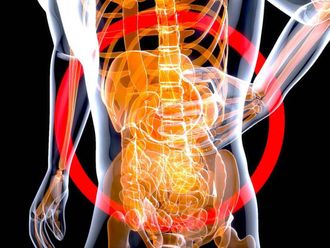In the past, metabolism has been linked to fuel consumption. The process of metabolism, put simply, is when your body converts food into energy. In much the same way as an engine uses more petrol as you rev it to the red line, the harder you work out, the more food you consume. And, once you exhaust the calories you’ve already consumed, your body will start using your fat reserves for energy. When you reach that stage, you’ll start shedding pounds. The key to metabolism is intensity, with intervals of rest so you should look for exercises where you can ramp up the intensity of your workout as your fitness levels improve.
Boxing
If you’re the sort of person who works long hours in a stressful job, you’ll probably finish the day with feelings of frustration and stress. If the thought of venting your frustration on an inanimate object appeals as a way of relieving your psychological pressure, then perhaps you should consider boxing. In fact, a session in front of the punch bag carries a number of other benefits above simple stress relief. It improves your overall
body strength, it sharpens your hand-eye coordination and burns calories.
WEIGHTLIFTING
In 2008, a study by academics at Boston University revealed that building type II muscle leads to a reduction in body fat without any changes to people’s diet. One of the quickest and most effective ways of building muscle is pumping iron. Weightlifting also builds muscle density, which reduces the risk of bone fractures. Arguably, the best aspect of weightlifting is how quickly you’ll start to notice
results, including how much more you’re able to lift after just a few months.
ROWING
Rowing is one of those exercises that offer a full body workout. It’s also an aerobic sport and depending on how hard you push yourself, you can burn up to 650 calories an hour. In keeping with its all body workout reputation, the physical act of rowing uses far more muscle groups than most forms of exercises, with your arms, legs and back all utilised. This will improve both, your core strength and muscles such as your quadriceps, which will leave you in better condition for other forms of exercises.
CYCLING
With the explosion in cycle tracks in the city over the past few years, cycling is clearly a popular pastime in the city. However, as the mercury rises over the summer months, cycling is also a form of exercise that can be practised in the gym. To effectively improve your metabolism, you should try short five-minute bursts of intensive cycling, followed by shorter recovery times. As your cardiovascular fitness improves, you can reduce your recovery times and increase the amount of time you spend cycling intensively. As with weightlifting, cycling also increases your muscle mass and builds your bone density. However, unlike weightlifting, cycling is a low-impact sport, which leaves you less susceptible to injuries.
SPRINTING
Most of us are familiar with the rush of blood that follows a sprinting session and the flow of adrenaline. Yet, it is also a proven way of improving your metabolism. In fact, in 2012, a study found that sprinting can enhance your body’s ability to enhance its protein synthesis pathways by as much as 230 per cent. If you truly push yourself on the treadmill, you should experience noticeable improvements to your cardiovascular health and your overall endurance.
SKIPPING
If you have fond childhood memories of skipping there are plenty of reasons for taking it up again. Not that skipping is the reserve of children — it’s a good exercise for boxers, who benefit from the cardiovascular workout and the improvements to their agility. If you up the performance, it can be categorised as a HIIT (High-Intensity Interval Training) workout. In fact, studies have revealed that skipping can burn as much as 1,300 calories an hour. You also don’t need to worry about expensive gym membership — you simply need a rope and some self-discipline.












